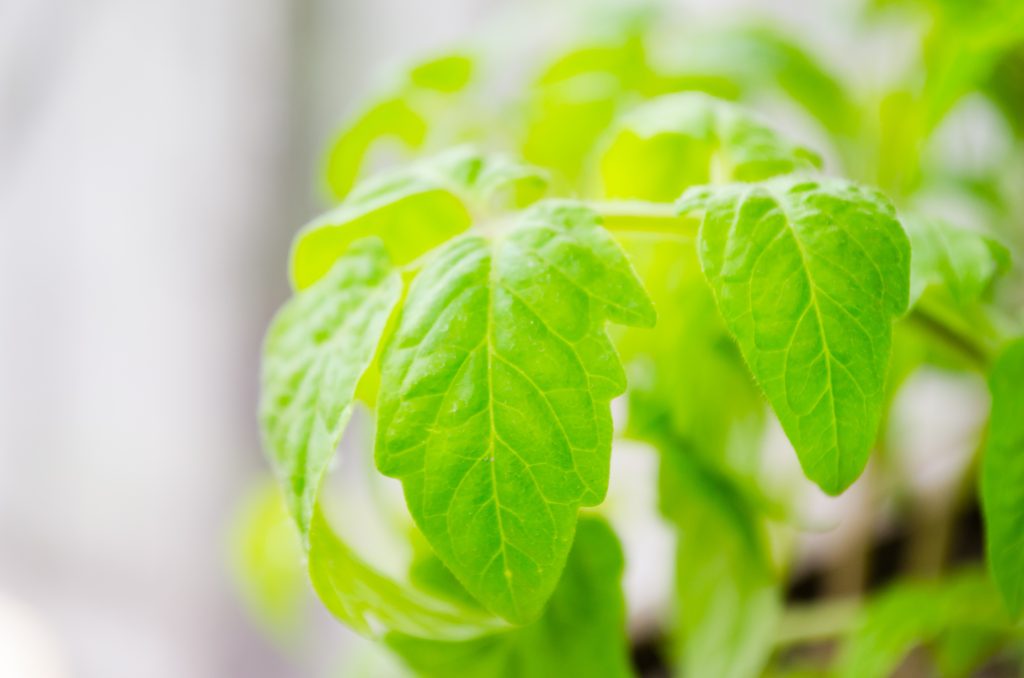What is plant sap analysis?
Plant sap analysis (PS) measures the amount of plant nutrients present in the plant sap. It gives a measure of how much nutrient the plants can metabolize over the next two to three weeks. High values indicate that there is plenty of available nutrients in the plant medium/soil, while lower values indicate that nutrient availability is starting to decline or that the plants are having difficulty absorbing the nutrients. For example, a low value may mean that the nutrients are fixed in a form that is difficult to absorb or that the soil temperature is too low (phosphorus, iron and molybdenum).
A plant sap analysis can be taken at any time during the growing season. In intensively grown crops, sampling is repeated every two to three weeks as long as growth occurs. This provides a basis for decision-making on foliar fertilization, especially with hard-to-absorb substances that are easily fixed in the soil/substrate. In case of poor growth or suspicion of nutrient deficiency in the soil, the sap analysis should be supplemented with Spurway soil analysis.

Performance and scope of the plant sap analysis
The pH and conductivity (EC) are measured directly in the plant sap.
The analysis includes pH, conductivity, sugar content (Brix value), plant nutrients: nitrate nitrogen, ammonium nitrogen, phosphorus, potassium, magnesium, sulphur, calcium, manganese, boron, copper, iron, zinc, molybdenum, silicon, sodium and aluminum.The substances are given in mg/liter of plant sap.
Propping instructions Plant juice analysis:
Leaf samples can be taken on overcast days at any time of the day. On sunny days, the sample should be taken early in the morning when the plant is juiced.Make sure your hands are clean and not smeared with skin cream.
For almost all cultures, the oldest active leaf should be sampled. Some exceptions exist, see below.Both leaf blade and leaf stem should be taken. Do not take leaves that are beginning to yellow or wilt. Do not include dirty/soiled leaves or leaves lying on the ground (if necessary, the leaves can be rinsed free of soil and wiped with a towel).
Pick leaves from different parts of the growing area to be sampled. If any part of the field deviates, it should be considered to take a separate sample from there.
Sample size should be at least 150 grams. Put the sample in a plastic bag and seal immediately after sampling. Protect the sample from sunlight and store in a refrigerator.Avoid taking the samples at the end of the week if the samples are to be sent, so that the sample does not risk being left in the post over the weekend.In case of multiple samples, label the samples with the sample number/sample name.
Consignment note
Attachdelivery notewith sample number/name, plant species and stage of development and indicate if it is from organic farming. Remember to include the name and billing information (including organization number/personal number), as well as the e-mail address of the persons to whom we will send the results.
Download the delivery note!
Response time
Analysis results for plant juice analysis are sent by e-mail the day after the sample reaches LMI (sample delivery by 16.00)!
Additional instructions for certain plant species
| Plant species | Instruction | Group |
| Cucumber | Blade handle | 1 |
| Onion | The whole aboveground plant | 2 |
| Carrot | The whole aboveground plant | 2 |
| Head lettuce | The whole aboveground plant | 2 |
| Pears | Oldest leaves from vegetative shoots | 3 |
| Rhubarb | Blade handle | 1 |
| Celery | Blade handle | 1 |
| Straw cereals | The whole aboveground plant | 4 |
| Tomato | Blade handle | 1 |
| Valled plants | The whole aboveground plant | 2 |
| Apple | Leaves from vegetative shoots | 3 |
Group 1. For plant species with coarse petioles, only the petioles are taken. The leaf discs themselves are cut off immediately. Select stems from oldest fully active, green leaves.
- Cucumber
- Rhubarb
- Celery
- Tomato
Group 2. For some plant species, the whole aboveground plant/flower is taken
- Head lettuce (for iceberg lettuce take oldest active leaf)
- Onion (only the blast, not the onion itself)
- Carrot
- Grasses, herbs and legumes
- Peas
Group 3. On fruit trees, leaves including petioles are taken from the lower quarter of vegetative shoots
- Pears
- Apple
Group 4. Straw crops
- Until anthesis, cut the entire aboveground leaf mass 2-3 cm above the soil surface.
- From the axil, cut the top two leaves including the intermediate stem. Remove the axis.
Stop guessing, measure!

